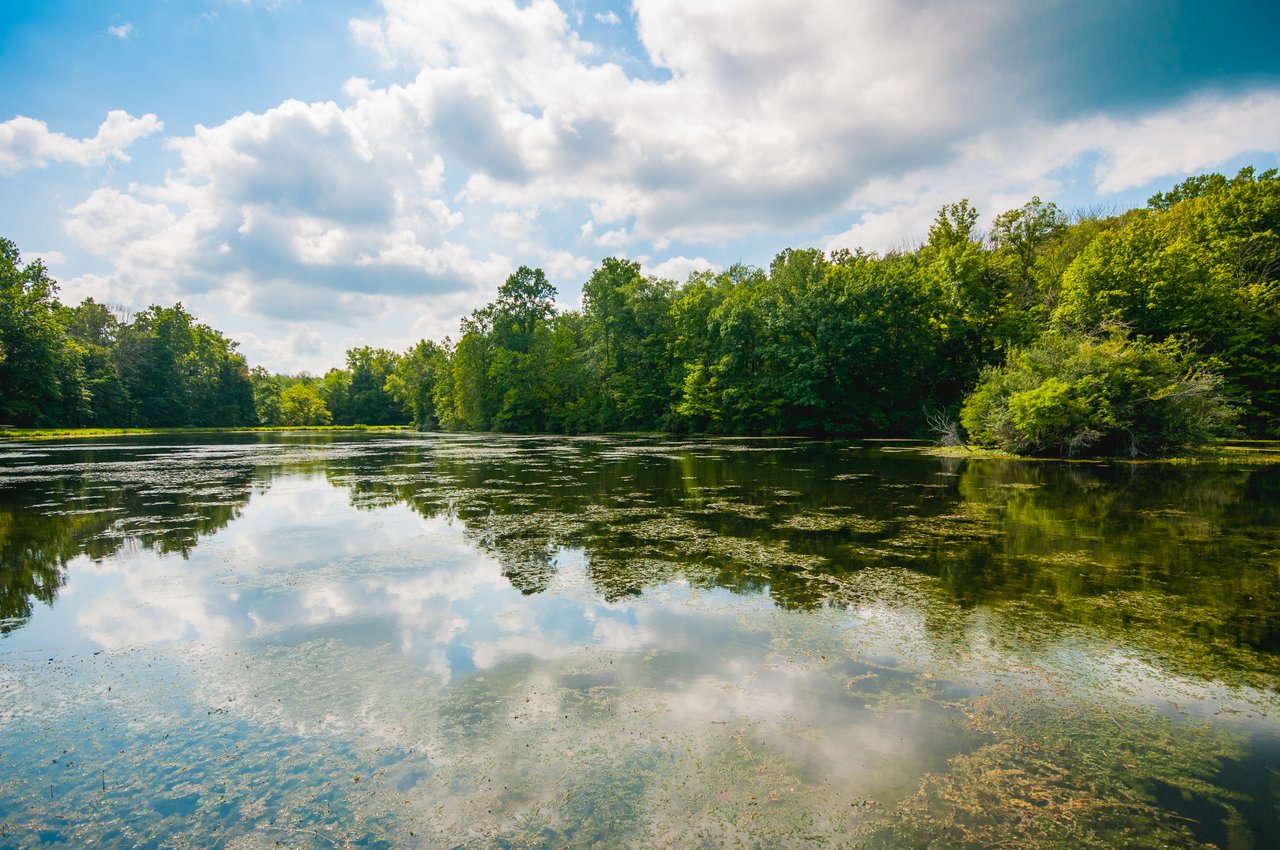Indy’s parks and the greenways that connect them form a vital network of green infrastructure that conserves nature and provides wildlife habitat, stormwater management, and other environmental benefits.
Stewardship
Over 1,900 acres across 37 parks are managed as natural areas in partnership with the Office of Land Stewardship. These natural areas play an important role in preserving critical wildlife habitats; protecting air quality; addressing stormwater issues; while also providing passive recreational opportunities. Stewardship efforts in parks helped Indianapolis earn a Top 10 City for Wildlife designation from the National Wildlife Federation in 2015, 2018, and 2019.
Learn more about the Office of Land Stewardship.
Conservation Corridors
Conservation corridors are strips of land or waterways protected from development. In Marion County, the following creeks are designated conservation corridors.
- Crooked Creek
- Length: 11.2 miles Location: I-465 on the northwest side, south to Lake Sullivan at 38th St.
- Mud Creek
- Length: 4.4 miles Location: 96th St. on the northeast side, southwest to Fall Creek
- Indian Creek
- Length: 7.5 miles Location: Pendleton Pike north and northwest to Indian Lake, west to Fall Creek
- B&O
- Length: 7.1 miles Location: Hendricks County Line east, through Speedway to Tibbs Ave.
- Grassy Creek
- Length: 7.5 miles Location: I-70 on the east side, south to Buck Creek
- White Lick Creek
- Length: 6.75 miles Location: Hendricks County Line southeast to Indianapolis Airport property, west to Hendricks County Line
- Buck Creek
- Length: 11.5 miles Location: Hancock County Line south to Johnson County Line
Green Practices
With more than 200 city parks; over 40 recreation, nature, and aquatic centers; and over 2,000 programs offered each year; Indy Parks has many opportunities to incorporate sustainable practices into what we build, what we do, and how we serve communities. Sustainability and resilience are at the forefront of our planning, design, and construction projects. Our staff-led Green Committee drives green initiatives associated with programs and operations. These initiatives include practices such as the following:
- converting lights inside facilities to LED
- planting native and non-invasive plants at parks
- supplying compostable or paper plates, utensils, cups, etc. for programming and concession stands where possible.
- increasing recycling opportunities at our facilities
- offering educational programming at facilities and day camps on sustainability and recycling.
Habitat Management
Indy Parks’ 11,000 acres contain forests, prairies, wetlands, and other types of ecosystems that support wildlife. Encouraging and maintaining a diverse array of native flora and fauna supports healthier ecosystems. Indy Parks’ habitat management practices that promote biodiversity include controlled prairie burns, wetland mitigation, deer management, the removal of invasive plants, and the restoration of native plant areas.
Deer Management Program
Too many deer in Eagle Creek Park can damage the park’s ecosystem and threaten wildlife. Indy Parks and Recreation’s deer management program works to maintain healthy deer density. Since 2014, controlled reduction efforts have helped to bring the deer numbers in the park back to healthier levels, and the ecosystem has shown some encouraging signs of recovery. See below to learn about our efforts to safely reduce the number of deer in the park.
Environmental Education
Environmental education is a core program area at Indy Parks. Through our three nature centers at Holliday Park, Eagle Creek Park, and Southeastway Park, we strive to connect the community to nature. Although we have dedicated nature centers, education doesn’t stop there. Many other family centers offer programs such as Critter Chat and Coffee and Conservation at the Garfield Park Conservatory.
During the summer months, we offer a wide variety of Environmental Education Day Camps to get youth out in nature. These camps range from Junior Ornithologist at the Eagle Creek Ornithology Center, Trail Stompers at Southeastway Park, Eco-Warriors at Holliday Park, and so many more.
Events throughout the year such as Bug Fest at Southeastway Park, and Bird Fest at the Eagle Creek Ornithology Center, help residents learn about and get up close and personal with the surrounding nature.


